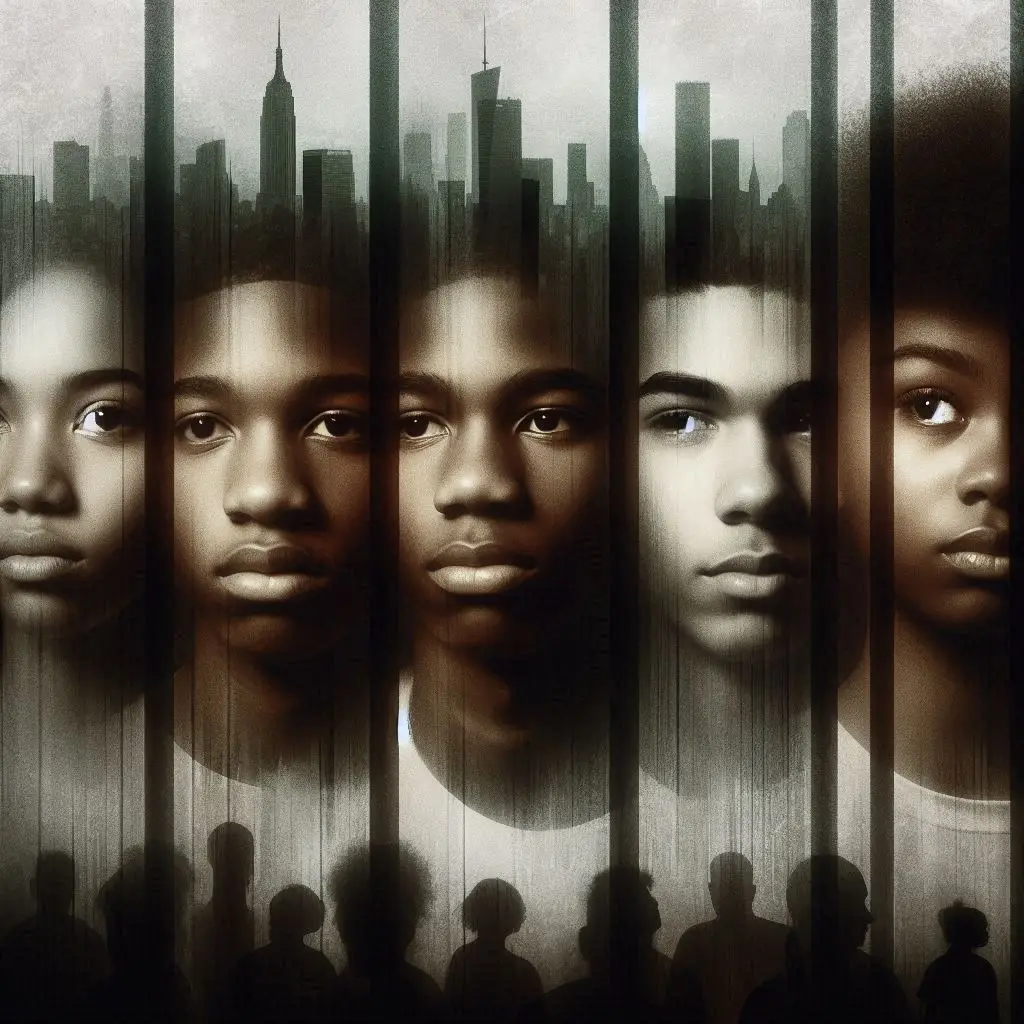Listen to “Central Park Five” on Spreaker.
Central Park Five
Today, we’re going to tell a story so disturbing, so outrageous, that you’ll have a hard time believing it’s true. But it is. It’s the real-life nightmare of five boys—yes, boys—who were thrown into the jaws of a justice system that wasn’t interested in justice at all. This is the haunting, true story of The Central Park Five, told in a way you’ve never heard before.
Now, picture this: It’s April 19th, 1989. A cool spring night in New York City. Central Park is alive—runners jogging, couples strolling, laughter echoing from teenagers scattered around the park. It’s a place of calm and energy all at once, a patch of nature nestled in the heart of the biggest city in America.
But on that night, something horrific happened.
A woman—28-year-old investment banker Trisha Meili—went out for a jog, just like she did most nights. But this night, she never made it home. She was found hours later in the dirt, barely breathing. Her skull was fractured, she had been beaten almost to death, raped, and left naked in a shallow ravine. Her body temperature was so low, doctors didn’t think she’d survive. The attack shocked New York. It wasn’t just violent—it was vicious, animalistic. And people were scared.
The city needed answers. Fast.
The NYPD launched a massive investigation. Under pressure from politicians and a terrified public, they needed someone—anyone—to blame. So when they learned a group of Black and Latino teens had been in the park that same night, they pounced. These boys weren’t part of a gang. They weren’t even all together. They were just a bunch of kids—goofing off, hanging out, doing what teenagers do.
Five of those kids were arrested: 14-year-old Kevin Richardson, 14-year-old Raymond Santana, 15-year-old Antron McCray, 15-year-old Yusef Salaam, and 16-year-old Korey Wise. None of them had ever done anything like this before. Some had never even been in trouble.
But the police didn’t care.
Each of them was brought in, one by one. They were interrogated for hours—no food, no sleep, no parents, no lawyers. Just scared kids in small rooms, surrounded by grown men shouting at them, lying to them, pressuring them.
And slowly, one by one, they broke.
Kevin was the first. He confessed to being at the scene. Then Raymond. Then Antron. Then Yusef. And finally, Korey. But here’s the thing—their stories didn’t match. Not even close. One said they attacked the woman near a baseball field. Another said it was by the reservoir. One said someone held her legs. Another said he wasn’t even there when it happened.
They got names wrong. They described things that weren’t in the park. Their timelines were completely off.
Why? Because they were terrified. They thought that if they just said what the police wanted to hear, they could go home. But they didn’t go home.
They were charged with rape, attempted murder, robbery, assault—all of it. Despite having no DNA evidence linking them to the crime. Despite their stories not lining up. Despite the victim having no memory of the attack.
But none of that mattered. The city had already made up its mind.
The media exploded. They called the boys a “wolf pack.” Said they were predators who hunted their victim like animals. Full-page ads called for the death penalty. The city wanted blood—and the boys were served up as scapegoats.
At trial, the prosecution leaned hard on the confessions. They didn’t need evidence, they had signed statements. That was enough for the jury. In 1990, all five were found guilty. Four were sent to juvenile facilities. Korey Wise, the oldest, was sent to Rikers Island—one of the most dangerous adult prisons in the country.
They spent between 6 and 13 years locked away. Childhood gone. Dreams destroyed.
But the story doesn’t end there.
In 2002, something incredible happened.
A man named Matias Reyes was sitting in prison, serving a life sentence for multiple rapes and a murder. One day, he saw Korey Wise in the same facility. And something in him broke.
He confessed.
He said he, and he alone, had attacked Trisha Meili. He gave exact details—things only the attacker could know. And when investigators ran a DNA test, it was a perfect match. It was him. 100%. None of the boys’ DNA was at the scene. None.
Suddenly, the truth came crashing down.
The boys—now men—had been telling the truth all along. Their confessions? Coerced. Their convictions? A complete failure of justice.
In December 2002, the charges were dropped. The Central Park Five were finally exonerated.
But what do you do after you lose over a decade of your life?
They had missed birthdays, graduations, holidays, first loves, jobs, opportunities, freedom. And even though they were free, the damage was already done. They were broken in ways the world couldn’t see.
In 2014, New York City settled with the five men for $41 million. But no amount of money could replace what they lost. Their story became a warning—a chilling example of how fear, racism, and public pressure can twist the truth until justice is unrecognizable.
Today, the Exonerated Five (as they’re now known) continue to speak out. They talk about wrongful convictions, prison reform, and how to protect others from the nightmare they lived. Korey Wise—who spent the longest time behind bars—is especially vocal, using his voice to fight for those who don’t have one.
This wasn’t just a failure of the justice system. It was a failure of an entire society.
Police made up their minds before the evidence was in. Prosecutors pushed forward despite huge red flags. The media fueled the fire. And the public was too eager to believe a story that made them feel safe, even if it wasn’t true.
This story isn’t about one bad cop or one mistake. It’s about how an entire system can go off the rails when people stop asking questions. When we value fast justice over fair justice. When we ignore the truth because the lie is easier to understand.
And that’s the real story of the Central Park Five.
A story of horror, injustice, resilience, and truth.
And if there’s one thing you take from this—it’s to never stop questioning the official story. Because sometimes, the loudest voices aren’t the most honest. Sometimes, justice wears a mask. And sometimes, the people we lock away are the ones we should’ve protected all along.
Until next time, stay curious, stay careful, and always look a little deeper.




